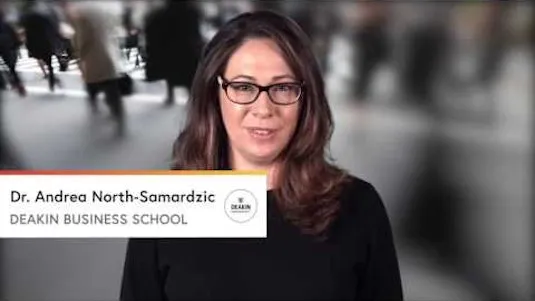
Solving Complex Problems 
This course provides an in-depth exploration of problem solving techniques for business and innovation. Students will gain the skills to analyze, evaluate, and solve complex problems from multiple disciplinary perspectives. ▼
ADVERTISEMENT
Course Feature
![]() Cost:
Cost:
Free Trial
![]() Provider:
Provider:
Coursera
![]() Certificate:
Certificate:
Paid Certification
![]() Language:
Language:
English
Course Overview
❗The content presented here is sourced directly from Coursera platform. For comprehensive course details, including enrollment information, simply click on the 'Go to class' link on our website.
Updated in [March 06th, 2023]
This course, Solving Complex Problems, provides an overview of how people think and how to use various disciplinary approaches to solve problems more effectively. It will explore what unifying patterns can be found at the heart of all complex problems and broaden the understanding of the field by teaching students to look at it in new ways. The course will also teach students what is at the heart of all innovations that solve complex problems and how to foster methods that allow for major breakthroughs.
[Applications]
The application of this course can be seen in many different areas. It can help individuals to think more critically and creatively when faced with complex problems. It can also help teams to work together more effectively to solve problems. Additionally, it can help organizations to develop better strategies for tackling complex problems. Finally, it can help individuals and organizations to identify unifying patterns in complex problems and use them to develop innovative solutions.
[Career Paths]
1. Business Analyst: Business Analysts are responsible for analyzing data and developing strategies to improve business operations. They use their knowledge of business processes and data analysis to identify areas of improvement and develop solutions. As the business world continues to become more complex, the demand for Business Analysts is expected to grow.
2. Data Scientist: Data Scientists are responsible for collecting, analyzing, and interpreting large amounts of data. They use their knowledge of statistics, machine learning, and data visualization to uncover insights and develop predictive models. With the increasing amount of data being generated, the demand for Data Scientists is expected to continue to grow.
3. Product Manager: Product Managers are responsible for managing the development and launch of products. They use their knowledge of customer needs, market trends, and product development to create products that meet customer needs. As the demand for new products continues to grow, the demand for Product Managers is expected to increase.
4. UX Designer: UX Designers are responsible for creating user-friendly experiences. They use their knowledge of user research, user interface design, and usability testing to create products that are easy to use and enjoyable to interact with. As the demand for user-friendly experiences continues to grow, the demand for UX Designers is expected to increase.
[Education Paths]
1. Bachelor of Science in Computer Science: This degree path focuses on the development of computer systems and software, as well as the application of computer technology to solve complex problems. It covers topics such as programming, data structures, algorithms, artificial intelligence, computer networks, and software engineering. With the increasing demand for technology in the workplace, this degree path is becoming increasingly popular and is expected to continue to grow in the coming years.
2. Bachelor of Science in Mathematics: This degree path focuses on the study of mathematics and its applications to solve complex problems. It covers topics such as calculus, linear algebra, probability, statistics, and numerical analysis. With the increasing demand for data-driven solutions, this degree path is becoming increasingly popular and is expected to continue to grow in the coming years.
3. Bachelor of Science in Engineering: This degree path focuses on the application of engineering principles to solve complex problems. It covers topics such as engineering design, materials science, thermodynamics, and fluid mechanics. With the increasing demand for technology in the workplace, this degree path is becoming increasingly popular and is expected to continue to grow in the coming years.
4. Bachelor of Science in Business Administration: This degree path focuses on the application of business principles to solve complex problems. It covers topics such as accounting, finance, marketing, and operations management. With the increasing demand for data-driven solutions, this degree path is becoming increasingly popular and is expected to continue to grow in the coming years.
Course Syllabus
Analysing Complexity
Evaluating Problems
Creating Innovation
Solving Complex Problems Capstone
Course Provider

Provider Coursera's Stats at AZClass
The Solving Complex Problems course provides an in-depth exploration of business and innovative problem-solving techniques. This course will teach learners how to identify the root cause of complex problems and how to break them down into smaller, more manageable pieces. Learners will develop an understanding of various disciplinary approaches to problem solving and how they can be applied to their own work. Learners will also learn how to analyze complex issues from multiple perspectives, and how to identify patterns and trends that help them better understand issues. They will also learn how to use data and research to inform their own decisions and develop creative solutions.
Discussion and Reviews
0.0 (Based on 0 reviews)
Explore Similar Online Courses

Street Photography with Your Phone: Color and Composition

Procurement and Logistics Management

Python for Informatics: Exploring Information

Social Network Analysis

Introduction to Systematic Review and Meta-Analysis

The Analytics Edge

DCO042 - Python For Informatics

Causal Diagrams: Draw Your Assumptions Before Your Conclusions

Whole genome sequencing of bacterial genomes - tools and applications

Leadership Skills Mastery Vol 1: Leadership for 2019

What is Leadership?


Start your review of Solving Complex Problems